I did this install 5 years ago. I must get an email every week about if i have the original instructions...
FOUND THEM, HERE YOU GO!
==========================================================
ARB PDF Install instructions from my Dropbox
==========================================================
 Imagine you are out on a backcountry camping trip in your fully equipped (or so you think) off road rig. As you are enjoying your day cruising the wooded ORV park, you sit, feeling mighty, without worry as you climb over boulders the size of Honda Civics and crawl up muddy/rocky inclines that would make mountain goats cringe. Your rig can do it all, you think to yourself. Suddenly, a bad storm comes in, much worse then what was mentioned earlier as you entered the park, talking to your buddies on the CB. As you try to get back to camp, the dry creek beds that you easily crawled thru earlier are now raging rapids, seemingly a few feet deep (at least). You start to cross without much thought or worry, knowing how capable your rig is. You put your front tires down the bank and dip your hood in to hear the unmistakable gurgle of your air intake slurping down gallons of water… Your truck stalls, and you are STUCK there with a hydro locked motor.
Imagine you are out on a backcountry camping trip in your fully equipped (or so you think) off road rig. As you are enjoying your day cruising the wooded ORV park, you sit, feeling mighty, without worry as you climb over boulders the size of Honda Civics and crawl up muddy/rocky inclines that would make mountain goats cringe. Your rig can do it all, you think to yourself. Suddenly, a bad storm comes in, much worse then what was mentioned earlier as you entered the park, talking to your buddies on the CB. As you try to get back to camp, the dry creek beds that you easily crawled thru earlier are now raging rapids, seemingly a few feet deep (at least). You start to cross without much thought or worry, knowing how capable your rig is. You put your front tires down the bank and dip your hood in to hear the unmistakable gurgle of your air intake slurping down gallons of water… Your truck stalls, and you are STUCK there with a hydro locked motor.
If you are like me, and own a ZJ bodied Jeep Grand Cherokee, you may be surprised to find out that no one has designed a snorkel kit for them. Until now! (January 2008). For the last few years, many people including myself have been following the ARB press releases closely, awaiting the arrival of the Safari Snorkel Release for the 1993-1998 Jeep Grand Cherokee. Unfortunately the release was pushed back many times due to problems with ARB Australia actually finding a ZJ to get in their shop to get the product designed (apparently they aren’t very common over there). I sent many an email to ARB’s US US

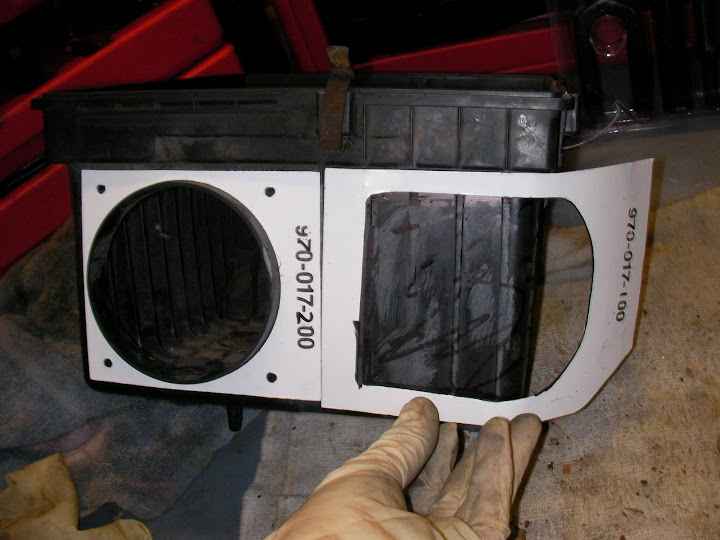

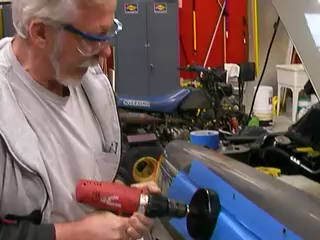
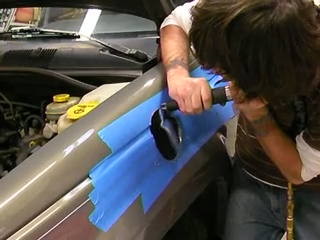



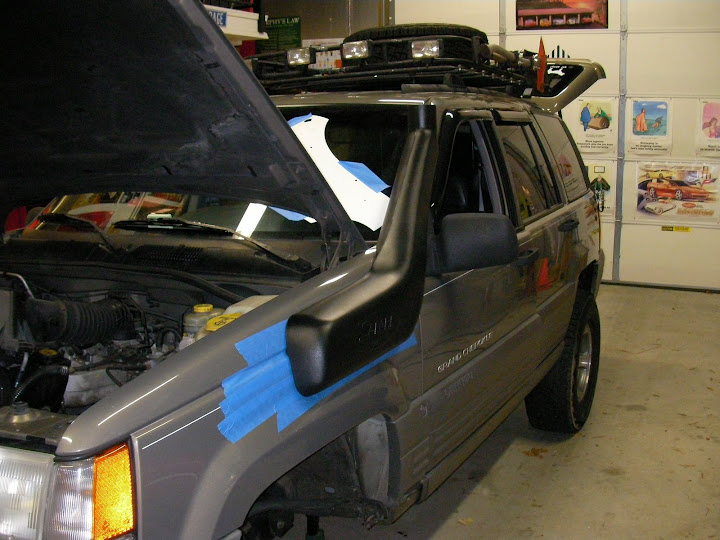
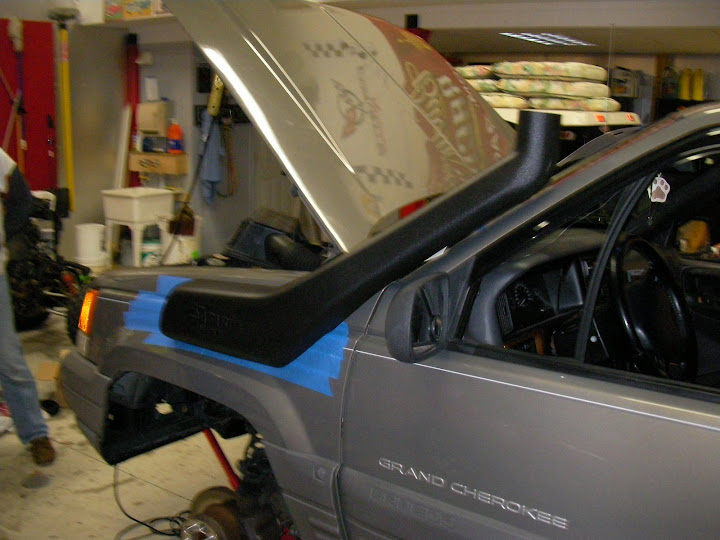
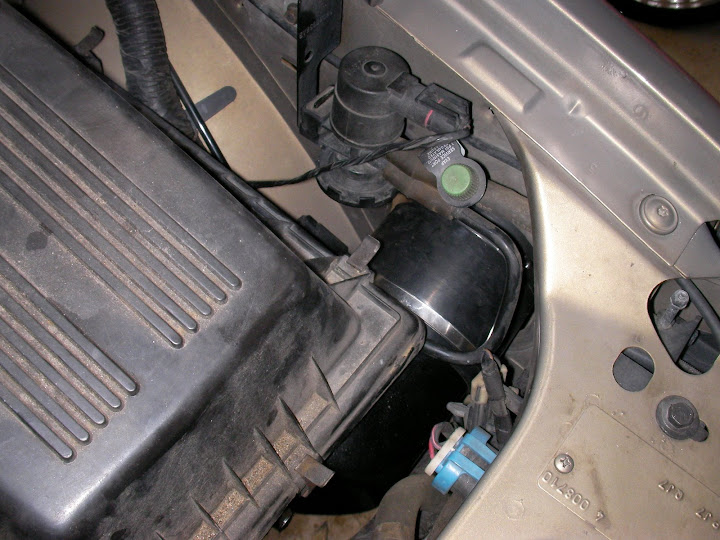
 My first seat-of-the-pants driving impression is that you can hear the snarl of the intake when you step on the gas hard. It sounds like any other upgraded intake system, except this one uses about 4 feet more tubing to get the job done. Day to day driving, I have noticed that my MPG has slightly increased, by about .5-1.5 MPG better. I also noticed better throttle response and slightly more oomph on the hwy. It seems like the Jeep doesn't have to downshift on every slight uphill grade that I come to. I wouldn’t add this part just for performance benefits, but the benefits are welcomed.
My first seat-of-the-pants driving impression is that you can hear the snarl of the intake when you step on the gas hard. It sounds like any other upgraded intake system, except this one uses about 4 feet more tubing to get the job done. Day to day driving, I have noticed that my MPG has slightly increased, by about .5-1.5 MPG better. I also noticed better throttle response and slightly more oomph on the hwy. It seems like the Jeep doesn't have to downshift on every slight uphill grade that I come to. I wouldn’t add this part just for performance benefits, but the benefits are welcomed.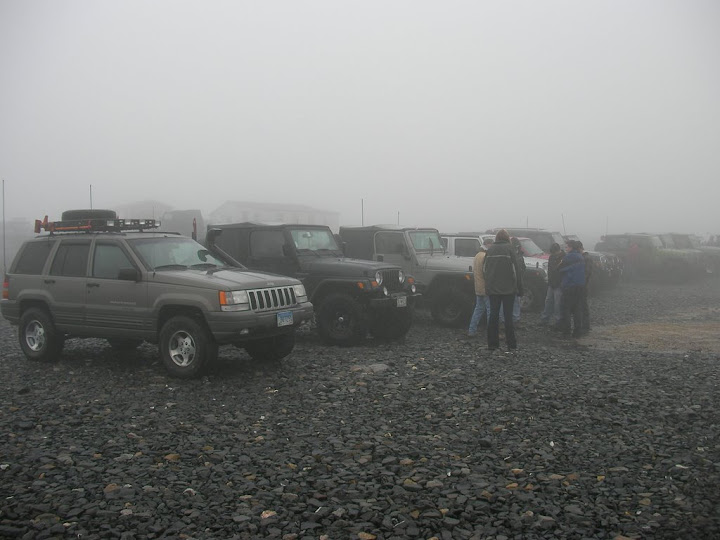 Last weekend, I was able to attend a Maryland Jeep Club meeting at Rausch Creek Off-Road Park in
Last weekend, I was able to attend a Maryland Jeep Club meeting at Rausch Creek Off-Road Park in 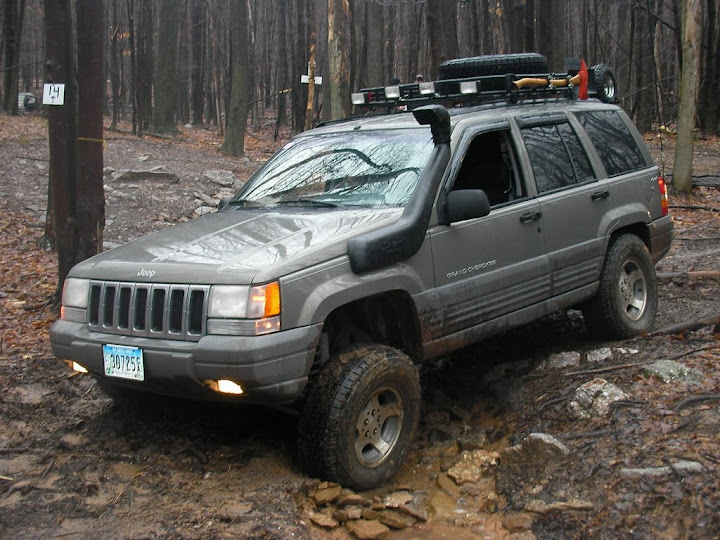
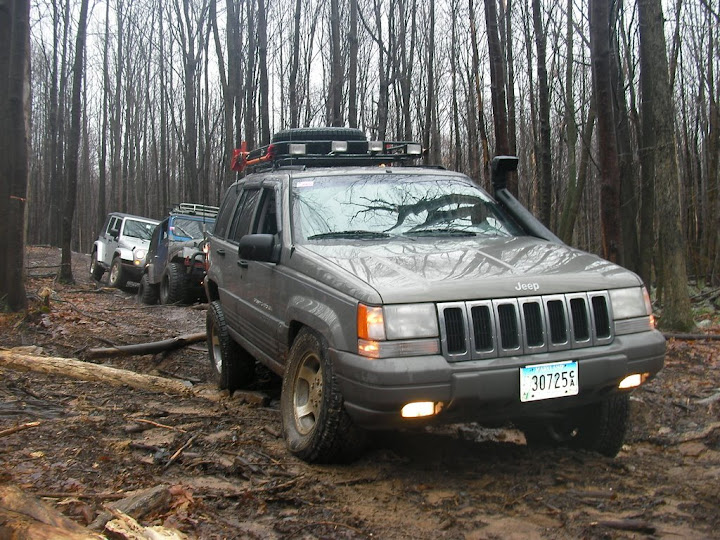 To make this post somewhat dial-up friendly, i have added links to some videos for the day.
To make this post somewhat dial-up friendly, i have added links to some videos for the day.In the woods
Rock Garden
Cresting a Good sized Hill
Runaway Rubicon
CJ playing + Hillybilly Fender Fixins
Fast forward a few hours, as we stumble across “Hummer Hole” I was delighted to see that someone else had already tried it for the day (without a snorkel, or good results). Their jeep wrangler sat helpless in the hole, sunk nearly to the hood on the drivers side. We lent a hand and after a while managed to scoop them out to safety. While their jeep was not hydro locked, it was damaged. They managed to rip off the evap canister, fry some wiring, and get water in the differentials. After seeing the hole (which was mostly a 2” layer of ice at the top of a mud hole that was 4 feet deep at least), we all decided it was a pretty sloppy hole and that nothing good was going to come of it, and wasn’t worth damaging the jeep just to try out the snorkel. We decided to look for a river crossing that may have cleaner conditions and allow for a little dip for the hood to sink under on the approach. Unfortunately, we were unable to find such a crossing (at least deep enough to realize the full potential of the snorkel) even though we did get to find some water crossings and puddles that were decent to splash around in.
Though I haven’t had the ability to go thru hood deep water to try out the kit in real life situations, I do know that the snorkel is fully sealed. After the install, before I put the top angled intake tube on, I was able to start the jeep, put my hand over the hole and was able to choke the motor out by doing so (which means no air is going to the engine from anywhere else) So basically I know the kit will do its job when the time comes.
The bottom line is this: If you want to protect your engine from water, you can do no better then the ARB Safari Snorkel kit. The quality, fit and finish is some of the best around and you will not be left with a bad taste in your mouth. The money spent on this system can save you LOTS of money down the road if you happen to catch yourself in deeper water than you should be in.
I would like to thank my Crack squad of installers as well as Jim Jackson and Marc from ARB USA for the snorkel kit for the review
And for a closing picture, a playful pose from Sandy the ZJ.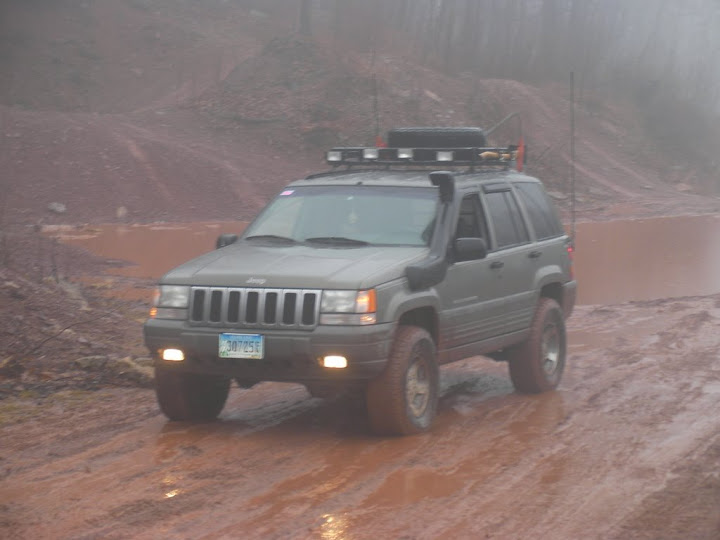


No comments:
Post a Comment